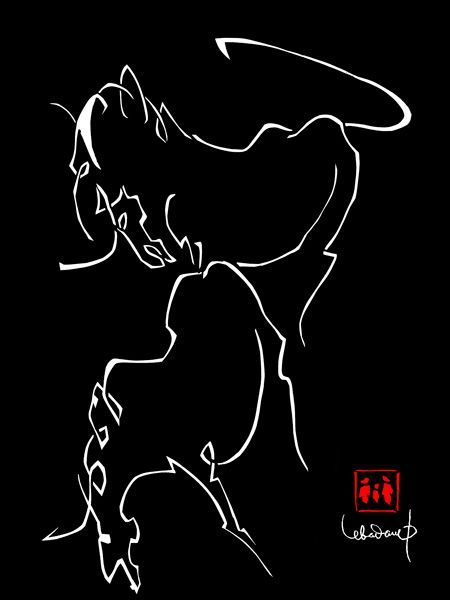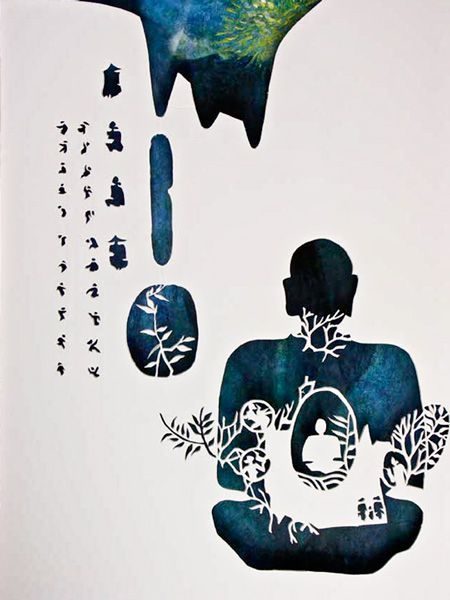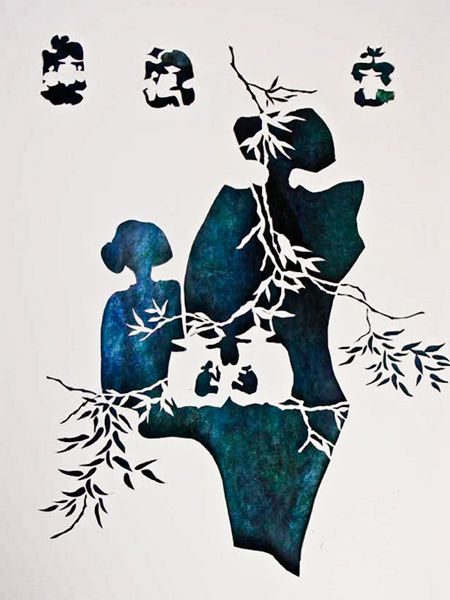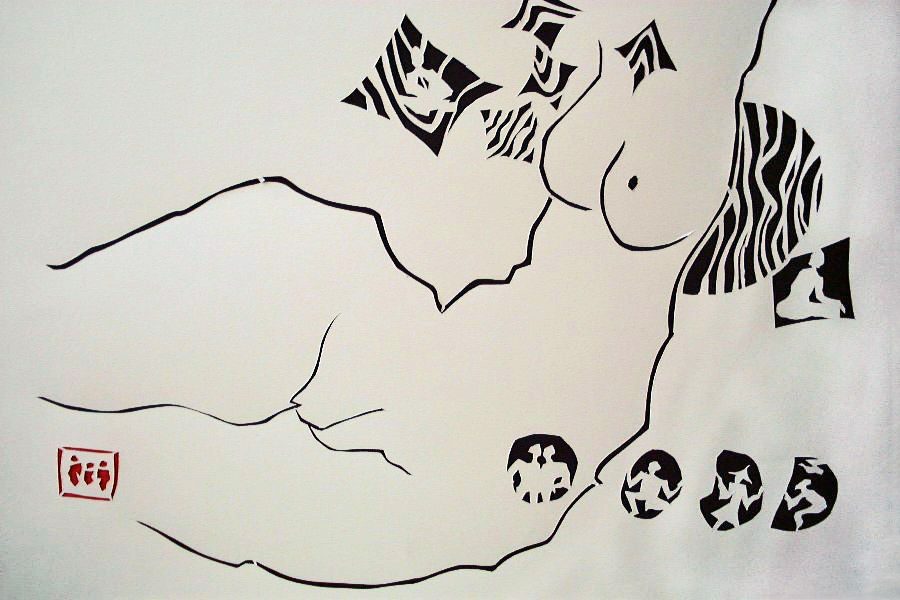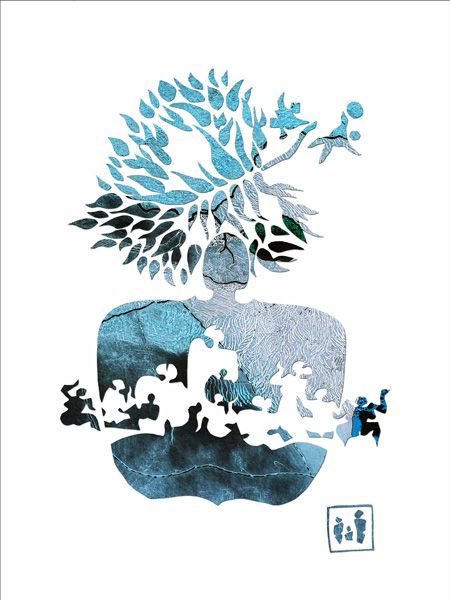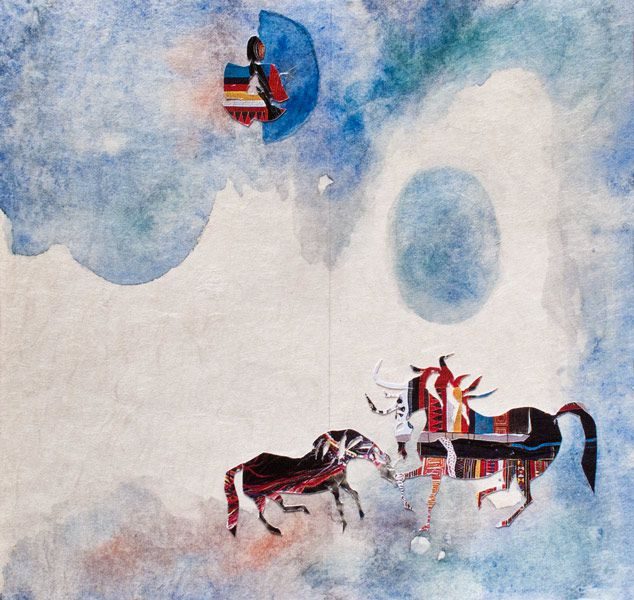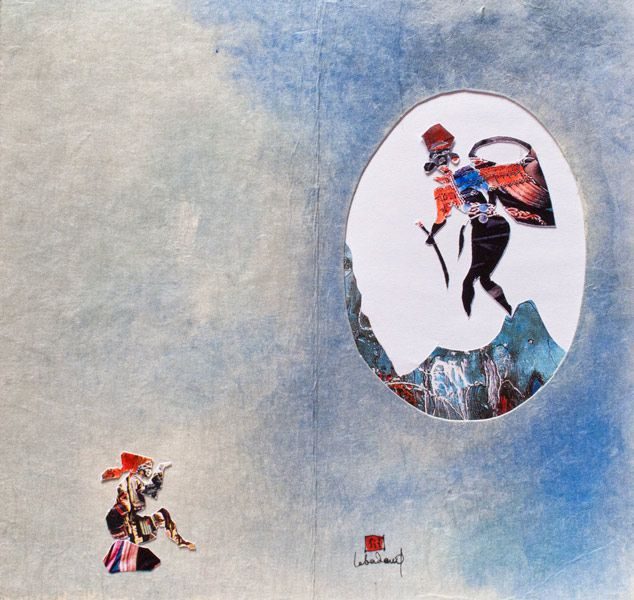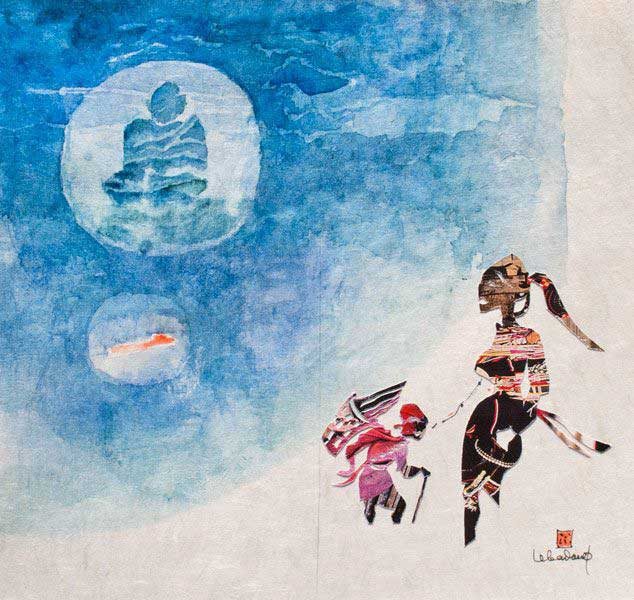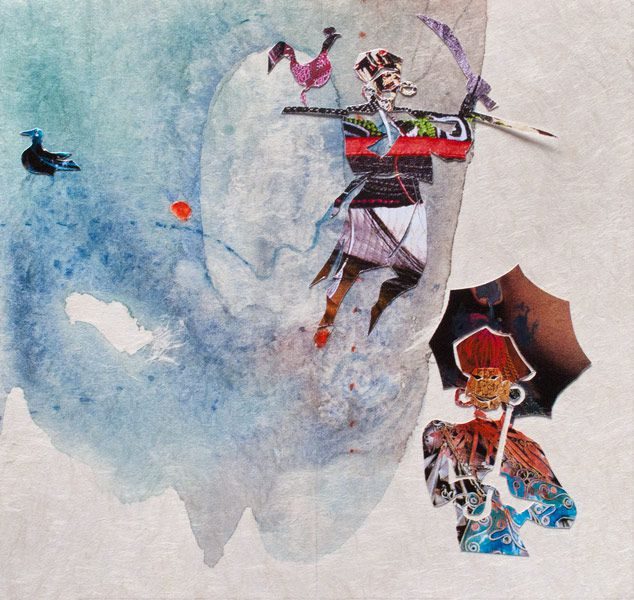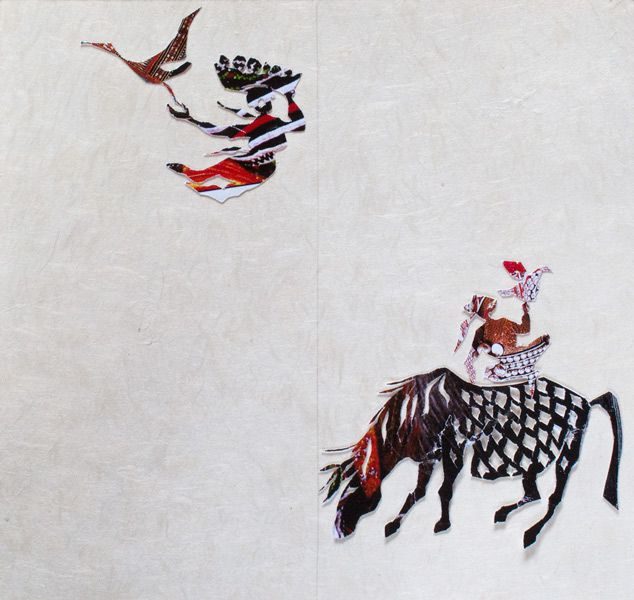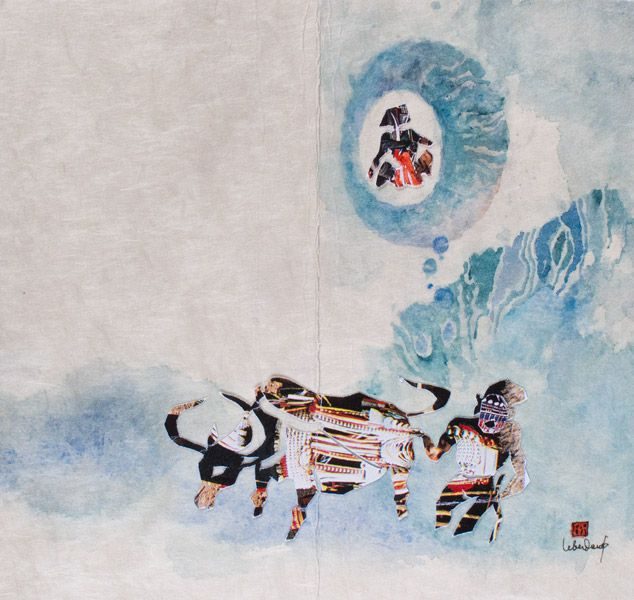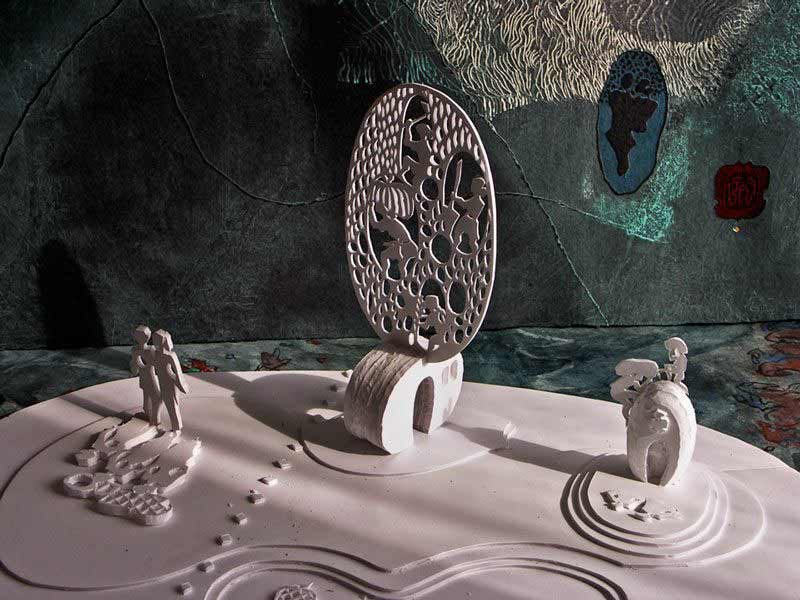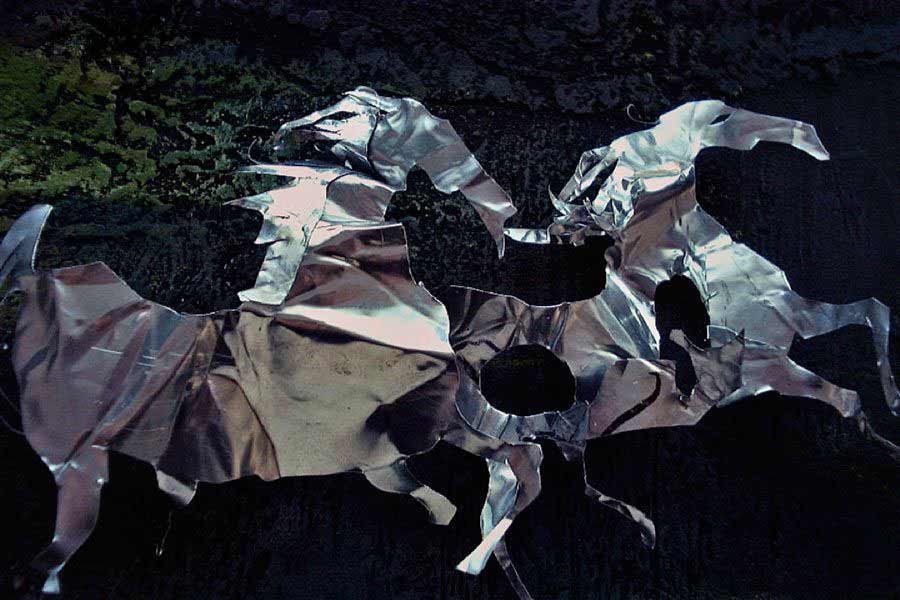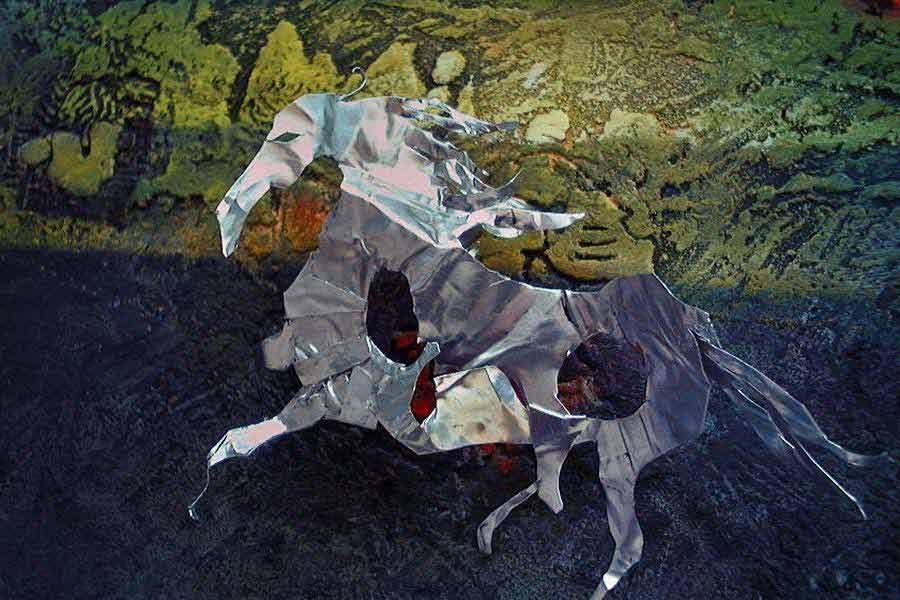Lebadang practised the art of paper-cutting, between void and full, which allows light to shine through like a shadow theatre. He illustrated a song-legend of the Hmong people, L’aimée de la rivière noire (The Beloved One of the Black River), published by the Editions Alternatives and translated by Mireille Gansel. The illustrations consist of people and animals cut from paper that reproduces patterns of Hmong textiles and represents scenes of daily life in the mountains of the north of Viêt Nam.

